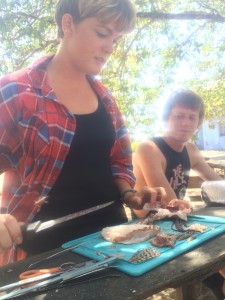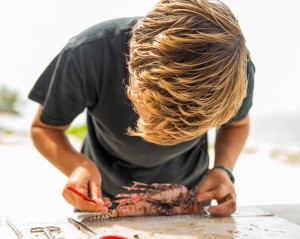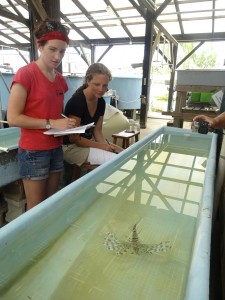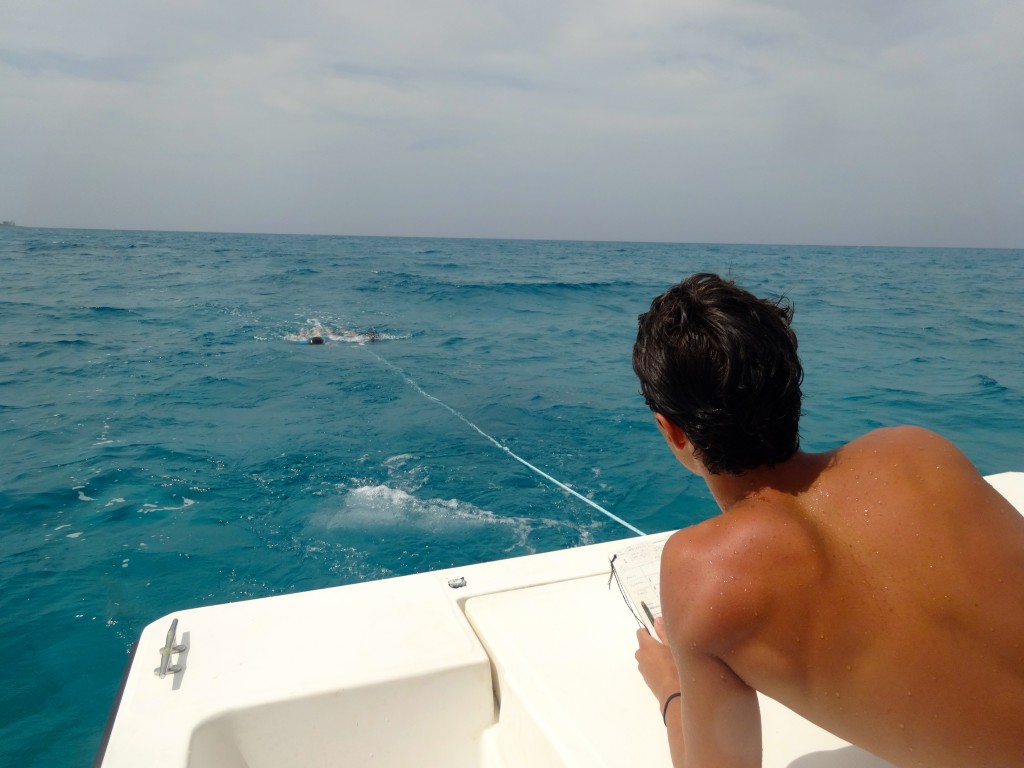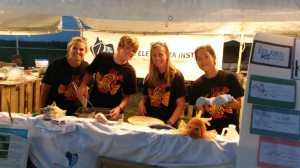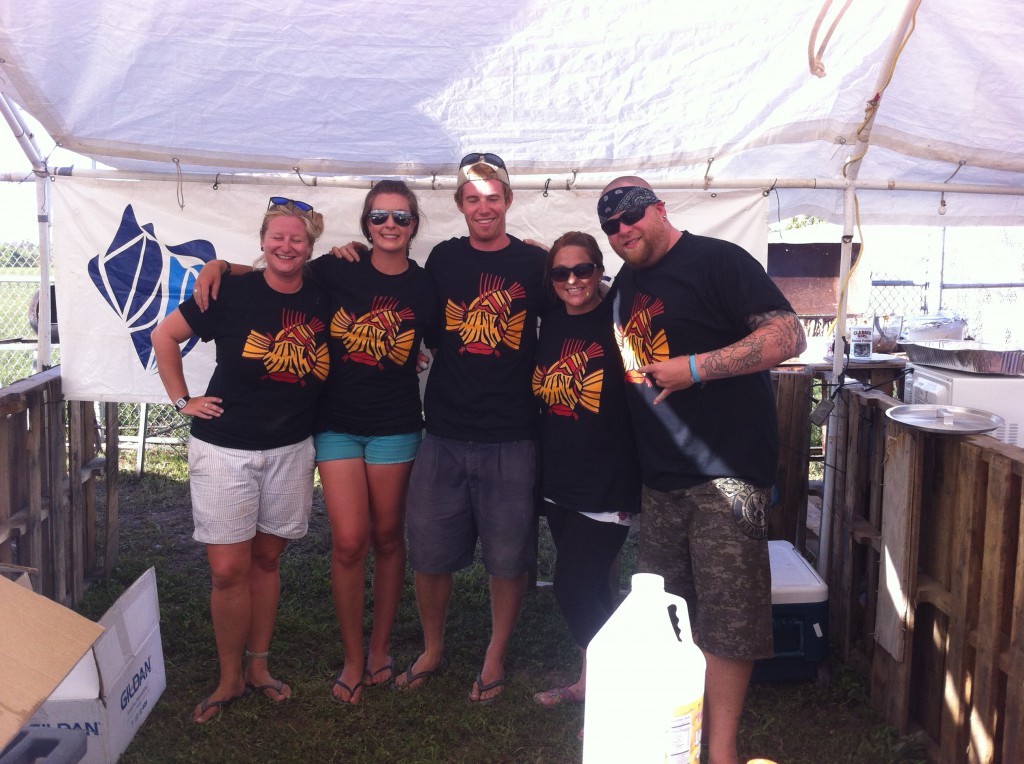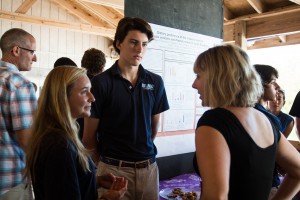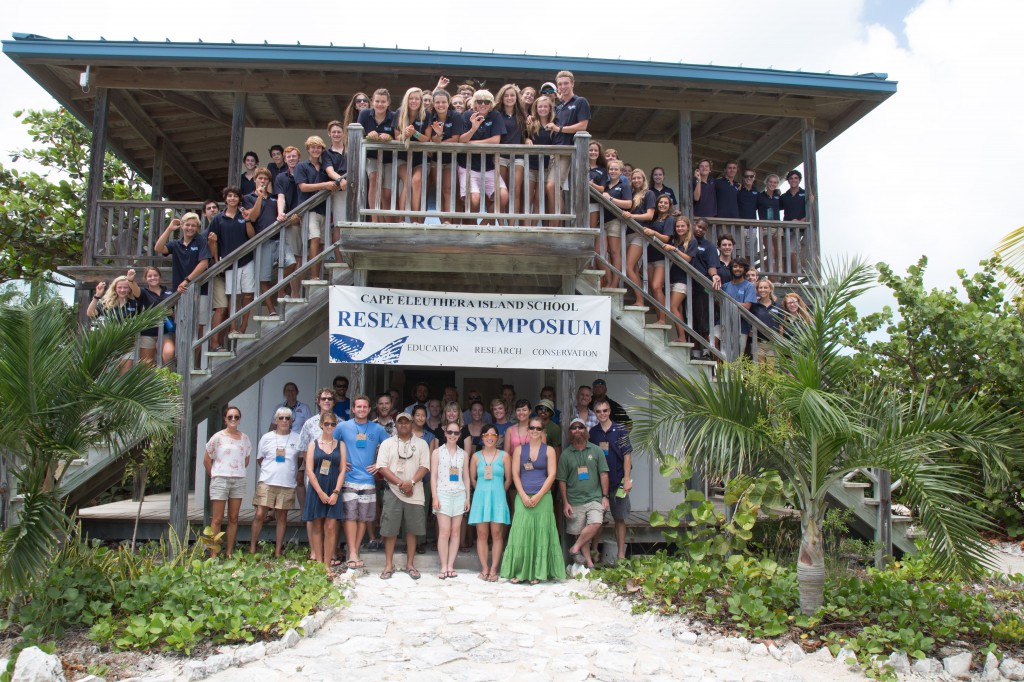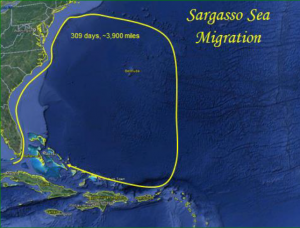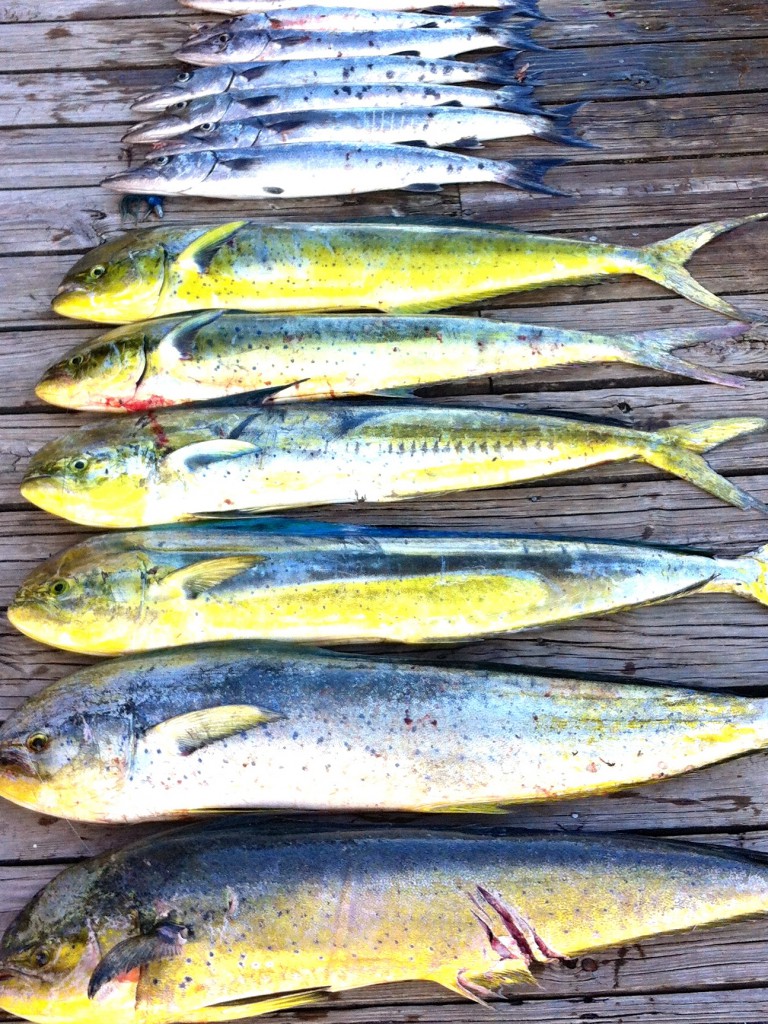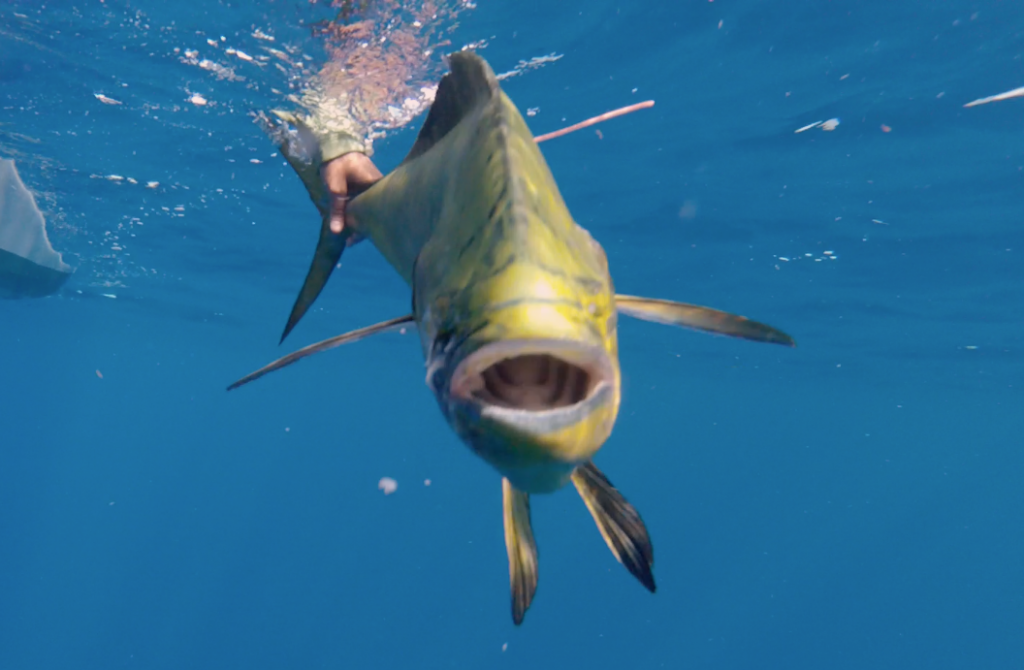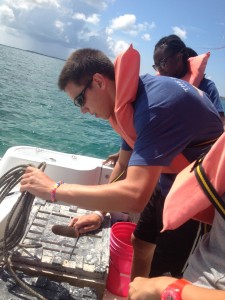
Stone crabs have been a popular and principal commercial fishery in Florida for many years, and have comprised a portion of the local fishing take here in The Bahamas for just as long. Recently, there have been reductions in Floridian catch, as well as an increase in fishing pressure for the crabs in the Bahamas, where they now represent the fourth largest fishery. With growing commercial demand and the arrival of new commercial export pressure in North Eleuthera, stone crab trapping in South Eleuthera may soon increase. Though the fishery is presumed to be sustainable – harvest restricted to legal-sized regenerative claws suggests less than 100% mortality – little is known about stone crab populations in The Bahamas and specifically around the Cape.
This semester Claire Thomas, manager of the Sustainable Fisheries Program at CEI, and Alicia Hendrix, CEI research assistant, are leading a research class for students at The Island School hoping to address the lack of information on South Eleuthera’s stone crab population. Using commercial fishing traps, students are collecting data on crab abundance, carapace width, propodus length, and sex that can provide insight into the local fishery. A better understanding of the current population will allow for comparisons in the future, and help identify any actions that may be needed to insure the longevity of this growing fishery. Students are also collecting data regarding water temperature, depth, and bottom type in surveyed areas to better understand the habitats stone crabs like to frequent here in The Bahamas. Continue reading
